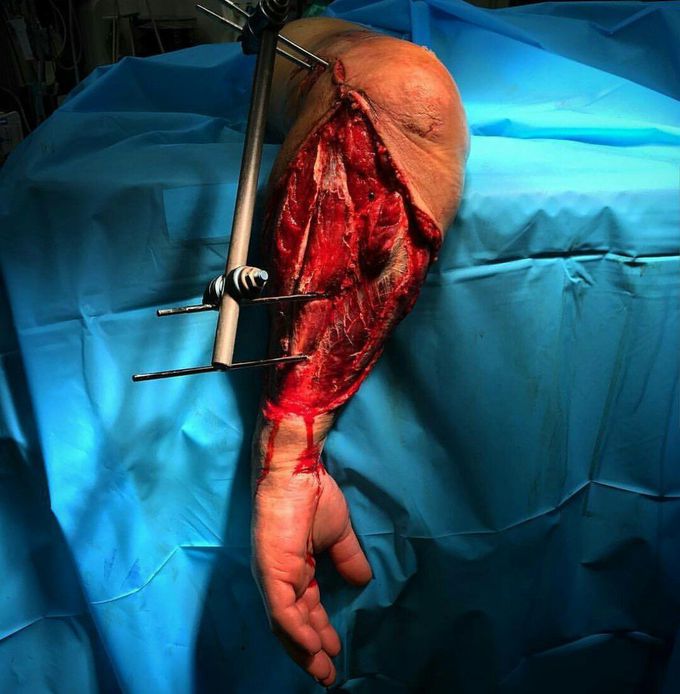


The consequences of driving with the hand outside the window!
The 30-year-old male drove with his arm out the window, enjoying the summer day when he rolled his pick up truck and his hand got caught and compresed. He had a terrible soft tissue injury associated with a distal humerus fracture and trans-olecranon fracture dislocation. He was treated with irrigation and debridement of his open fractures followed by external fixation. Eventually he underwent ORIF of his fractures and split thickness skin grafting.An open reduction internal fixation (ORIF) refers to a surgical procedure to fix a severe bone fracture, or break. “Open reduction” means surgery is needed to realign the bone fracture into the normal position. “Internal fixation” refers to the steel rods, screws, or plates used to keep the bone fracture stable in order to heal the right way and to help prevent infection.Under general anesthesia, an incision is made at the site of the break or injury, and the fracture is carefully re-aligned or the joint replaced. The hardware is installed, and the incision is closed with staples or stitches. The steel rods, screws, or plates can be permanent, or temporary and removed when healing takes place. Once the open reduction internal fixation is performed, a cast is usually applied.Complications of the procedure may include infection, swelling, and movement of the installed hardware.

